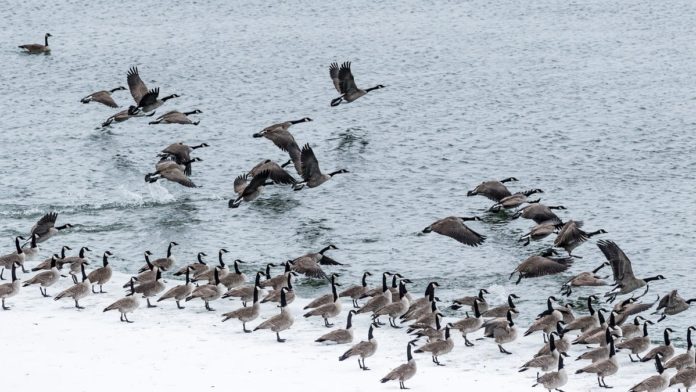My duties as an outreach biologist for the North Dakota Game and Fish Department are varied. One day I’m helping a hunter better understand the deer lottery, the next I may be checking on possible zebra mussels, urban wildlife and the invariable inquiry about where the hot fish bite is.
I also help with Game and Fish functions such as checking fishing access sites, possible fish kills and conducting upland and small game surveys.
One of the surveys is a count of waterfowl hanging around North Dakota in the middle of winter. When I try to explain my role in the midwinter waterfowl survey to friends, one of the first questions is, why?
The short answer is the survey is not just a North Dakota tally, but a nationwide count that tracks all species of geese to better understand their migration and wintering habitat, food and population dynamics.
It occurs the first week of January in all 50 states. Andy Dinges, department migratory game bird biologist, said the midwinter waterfowl survey is the longest-running coordinated migratory bird survey in North America. It got its start in 1935 as an effort to estimate continental populations. At the time, breeding ground surveys had not yet started, and even today, some of the arctic-nesting goose species are difficult to survey because of the remoteness of their breeding grounds.
The most recent annual midwinter waterfowl survey in early January indicated about 81,000 Canada geese in the state.
Dinges said that number likely would have been higher, but snow and bitterly cold weather in late December undoubtedly pushed some birds south just prior to the survey.
“The number of waterfowl recorded dropped substantially from last year’s survey, but that was a relatively mild winter with little snow accumulation,” he said.
In addition, Lake Sakakawea didn’t officially freeze over until Jan. 24 last year, which was the latest date on record.
“Despite recent weather we are still wintering a good number of waterfowl this year and conditions remain fair for wintering birds, unless we get too much snow accumulation,” Dinges said.
During the survey, an estimated 55,000 Canada geese were observed on the Missouri River, and another 21,100 on Nelson Lake in Oliver County. Dinges said after summarizing the numbers, an additional 7,000 mallards were tallied statewide, most of which were recorded on Nelson Lake. Lake Sakakawea officially froze over just a few days before the survey this year.
The 10-year average (2012-21) for the midwinter survey in North Dakota is 123,100 Canada geese and 24,700 mallards.
All states participate in the midwinter survey during the same time frame, to reduce the possibility of counting birds more than once.
Personally, as a biologist, I certainly enjoy seeing firsthand the hardy mallards still feeding on an oasis of field corn and dabbling in a pocket of open water near a rock rapid on the Red River.
It’s kind of like the ducks and geese are a kindred spirit, having the means and ability to migrate south, but choosing to stay here all winter, like many of us.
Credit: Source link































